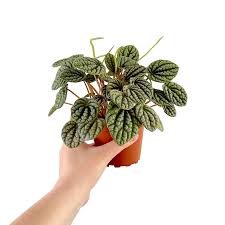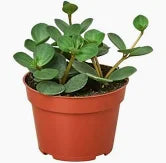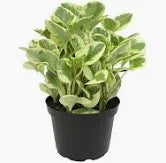Calabrese Greenhouse, Inc.
Peperomia-4"
Peperomia-4"
Couldn't load pickup availability
Light
Position your peperomia in a spot that receives medium to bright light to maintain its vibrant foliage colors. Place it directly in front of a west- or east-facing window, or set it a couple of feet back from a south- or north-facing window.
Insufficient light will result in fewer leaves, leaf drops, and drab coloration. Direct sun rays should be avoided, as they can burn the leaves.
Soil
Choose a soil blend that mimics chunky, loose, and acidic conditions. An orchid potting medium typically works well, but regular potting soil is fine, too. You can always lighten it with a handful of coconut coir and perlite for good aeration.
Many peperomia plant species grow as epiphytes, which means in the wild, they might settle into the nook of a tree and send their roots into some slightly decaying bark.
Water
Allow the top two inches of the soil to dry out between waterings. Keeping the peperomia on the dry side is better than saturating it. Soggy soil can lead to root rot.2 The peperomia has succulent-like leaves that indicate that these plants don't need frequent watering to maintain vigor.
Temperature and Humidity
Give tropical peperomia plants a warm and steamy environment, especially in the summer months when their growth is the most active. If you're considering placing your peperomia plants outdoors, make sure it's USDA zone 10 since they cannot handle freezing temperatures. Move plants indoors before nighttime temperatures drop to 50 degrees Fahrenheit.
If your plant doesn't get an outdoor vacation in the summer, place it on a tray of pebbles and water to increase ambient humidity, mist the plant regularly, or invest in a small-scale humidifier and put it nearby. Alternatively, choose a naturally humid room in the home, such as a bright bathroom for these humidity-loving plants.
The Peperomia family is pet-friendly! Peperomia are non-toxic, making them safe to keep around your furry friends. However, the best practice is always to keep new houseplants out of reach of small children and curious pets just in case.
Share






